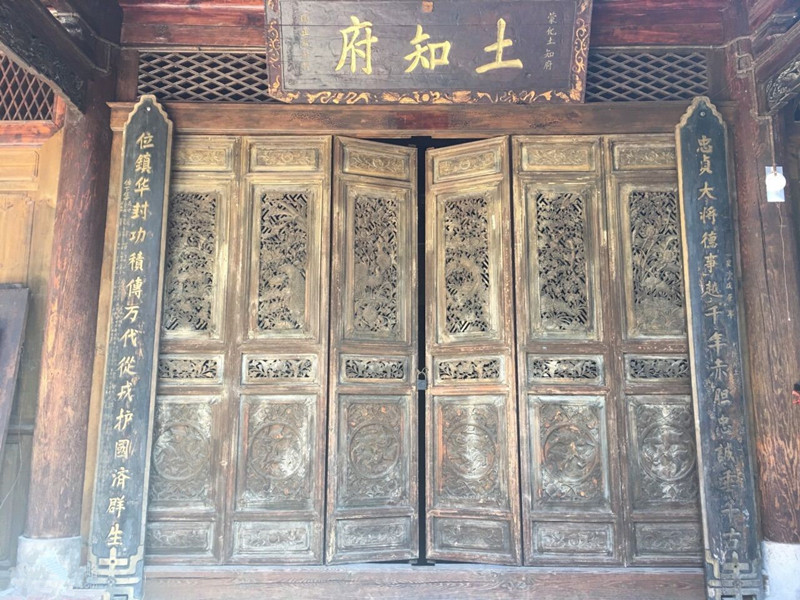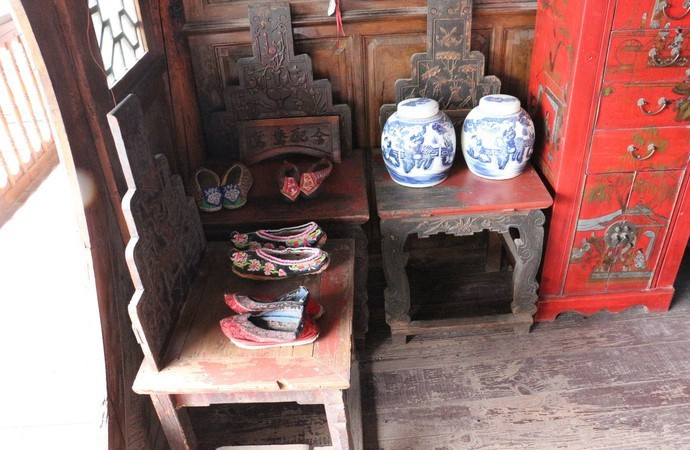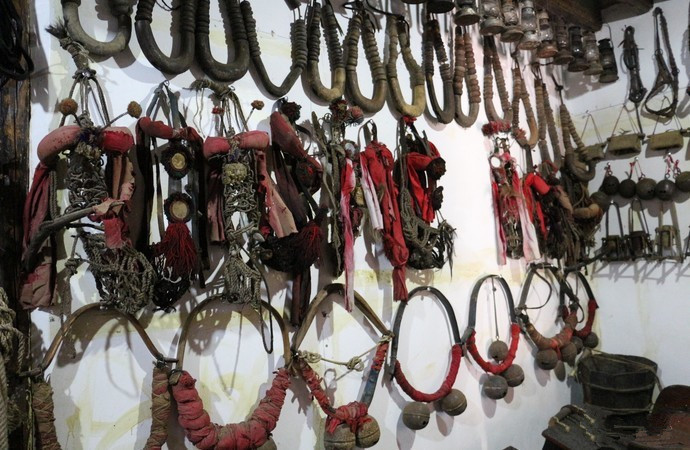
Weishan Folk Custom Museum, Dali
Weishan Folk Museum (巍山民俗博物馆) is a private folk museum located at No. 21 Renwen Lane (人文巷), Nanzhao Town (南诏镇), Weishan Yi and Hui Autonomous County (巍山彝族回族自治县), Dali Bai Autonomous Prefecture (大理白族自治州), Yunnan (云南). Formerly the residence of the eldest daughter of Liang Meisheng (梁美声), one of the four major caravan leaders (马锅头) of Weishan during the Republic of China era, the museum was established by two generations of the Zou Jingqian (邹敬谦) family. It houses over 20,000 artifacts from various periods, including Jia Ma (甲马) woodblock prints, caravan trade tools, and Republic-era furniture. The building retains the traditional San Fang Yi Zhao Bi (三坊一照壁) courtyard layout, with a fusion of Chinese and Western decorative elements and exquisite surviving wooden carvings. Visitors must be guided room-by-room by staff, with interactive activities such as Jia Ma printing experiences.
- Address: No. 21 Renwen Lane, Nanzhao Town, Weishan Yi and Hui Autonomous County
- Opening Hours: 08:00–20:00 year-round
- Ticket Price: 20 RMB per person
- Architecture Type: San Fang Yi Zhao Bi (三坊一照壁) traditional residence
- Collection Size: Over 20,000 items
History

The museum’s building was originally constructed in the early 20th century as the private residence of the eldest daughter of Liang Meisheng, one of the last four major caravan leaders in Weishan during the Tusi (土司) period. After enduring a century of weathering, it was gradually transformed into a private museum in the early 21st century by folk collector Zou Jingqian and his father, showcasing decades of family-collected folk artifacts.
Architectural Features
The main structure covers 996 m² and follows the San Fang Yi Zhao Bi layout, with the main hall and side wings connected by corridors. The gatehouse features carvings that blend Western geometric patterns with traditional floral and avian motifs. Wooden window lattice carvings depict scenes such as “The Eight Immortals Crossing the Sea” (八仙过海) and “Fisherman, Woodcutter, Farmer, and Scholar” (渔樵耕读). The central screen wall is inlaid with a marble landscape painting, while the eaves preserve Republic-era painted bracket sets (斗拱).
Collections
- Jia Ma Culture (甲马文化): Over 300 woodblocks dating from the Ming and Qing dynasties to the Republic era, covering themes such as Benzhu (本主) worship and agricultural rituals, with some unique to western Yunnan.
- Caravan Trade Tools (马帮用具): Saddles, leather panniers, bronze bells, along with caravan ledgers and merchant seals.
- Household Utensils (生活器物): Includes Qing-dynasty Yi lacquered lunch boxes, Republic-era silver bridal headpieces, and Bai tie-dye tools.
- Religious Art (宗教艺术): Twelve bronze Buddha statues from the Nanzhao period, surviving sutra fragments from the Dali Kingdom, and Daoist ritual implements.
Exhibition Services
The museum contains 13 exhibition rooms divided into three main zones: the Jia Ma Hall, Caravan Culture Hall, and Excavated Relics Hall. Tours are fully guided, with staff unlocking each room, and explanations lasting about 30 minutes, focusing on Jia Ma craftsmanship and caravan trade history. The second floor reconstructs a Republic-era boudoir scene, displaying carved canopy beds, dressing tables, and other original household furniture.
Operations
As a private museum, daily maintenance depends on ticket revenue, and some artifacts remain uncatalogued due to limited funding. As of 2024, operating hours extend to 20:00, including public holidays. Tickets must be purchased on-site, and group visits require prior booking.
Transportation
The museum is served by six bus routes, including Weishan Route 1 (巍山1路) and Zhou Weishan Route 1 (州巍山1路), with the nearest stop at Wenhua Academy Intersection (文华书院路口), a 150-meter walk away. For self-driving visitors, access is via Provincial Road S224, though no dedicated parking is available—public parking in the ancient town is recommended.

 7 Days GolfingTour
7 Days GolfingTour
 8 Days Group Tour
8 Days Group Tour
 8 Days Yunnan Tour
8 Days Yunnan Tour
 7 Days Shangri La Hiking
7 Days Shangri La Hiking
 11 Days Yunnan Tour
11 Days Yunnan Tour
 6 Days Yuanyang Terraces
6 Days Yuanyang Terraces
 11 Days Yunnan Tour
11 Days Yunnan Tour
 8 Days South Yunnan
8 Days South Yunnan
 7 Days Tea Tour
7 Days Tea Tour
 8 Days Muslim Tour
8 Days Muslim Tour
 12 Days Self-Driving
12 Days Self-Driving
 4 Days Haba Climbing
4 Days Haba Climbing
 Tiger Leaping Gorge
Tiger Leaping Gorge
 Stone Forest
Stone Forest
 Yunnan-Tibet
Yunnan-Tibet
 Hani Rice Terraces
Hani Rice Terraces
 Kunming
Kunming
 Lijiang
Lijiang
 Shangri-la
Shangri-la
 Dali
Dali
 XishuangBanna
XishuangBanna
 Honghe
Honghe
 Kunming
Kunming
 Lijiang
Lijiang
 Shangri-la
Shangri-la
 Yuanyang Rice Terraces
Yuanyang Rice Terraces
 Nujiang
Nujiang
 XishuangBanna
XishuangBanna
 Spring City Golf
Spring City Golf
 Snow Mountain Golf
Snow Mountain Golf
 Stone Mountain Golf
Stone Mountain Golf
















